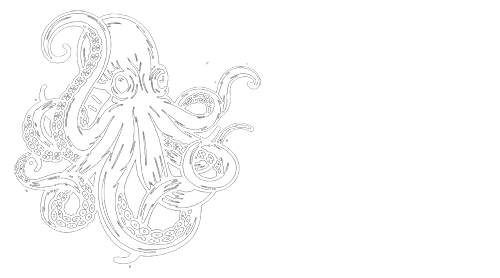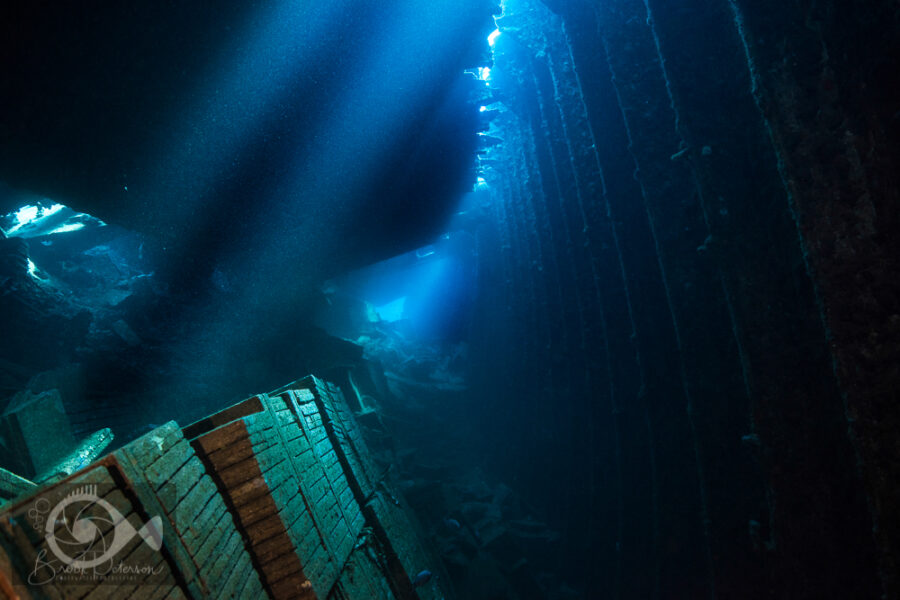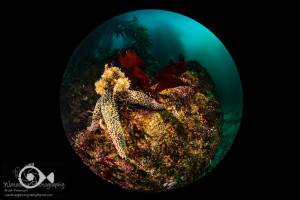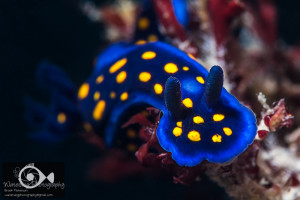
You may have heard it said that there are three pillars of photography. These pillars are important both above and below the waterline and each has to do with how light is controlled so that an image is produced on the camera’s sensor. Digital Cameras give us three tools that help us control the amount of light that reaches the sensor and thus creates an image. These are known as Aperture, Shutter Speed, and ISO.

A good understanding of how each of these works will give you the foundation you need to become a proficient photographer.
ISO What is it and how does it work?
To put it simply, ISO is a way of brightening or darkening an image in the camera. As you increase the ISO, the image will grow brighter.

However, raising the ISO has consequences. A higher ISO usually produces more noise or grain in the image, so you should use caution and raise it when shutter speed and aperture cannot be used to get the exposure you want. A good rule of thumb in underwater photography, is to use an ISO between 100 and 800 for most shots. Today’s DSLR cameras enable photographers to use much higher ISO’s than earlier models.
ISO is an excellent tool to use to get optimum conditions in camera. Don’t be afraid to change the ISO often as you shoot in different water depths as deeper water may be darker. Start with a Base ISO of 100 or 200 and raise it if necessary.

The above image of three stingrays uses an ISO of 100 with F/11 and 1/200th second. While the image of the sea star in darker water uses an ISO of 500 with f/11 and 1/200th sec. You can see that the f stops and shutter speeds are the same, and the amount of light is controlled by the ISO.

Shutter Speed
Shutter speed affects an image in a few ways. It changes how much time light has to come in through the lens, and it creates an effect on time, such as stopping action or allowing action to blur.

A slow shutter speed can be combined with movement, giving a blurred effect.

This kelp image (above) was taken using 1/13th of a second (f/18, ISO 200.) This is slow enough to blur the image. The camera was turned counter clockwise during the time the shutter was open to create a circular blur around the kelp giving the impression that the kelp was moving in the surge.
It is also possible to use a slow shutter speed to saturate the background color, or to reduce backscatter. Using the same settings (1/13th second, f/18 and ISO 200) the image of a kelp snail below is color saturated and the shutter is open long enough that bits of backscatter are blurred away and less noticeable.

When you are shooting a macro subject and you want a black background, you should adjust your shutter speed to the fastest speed that your camera will sync with the strobes. For most cameras this is around 1/200th or 1/250th of a second. Some cameras will sync as high as 1/320th. This lets in the smallest amount of ambient light possible. The strobes will light up your subject, keeping the background water black.

If you want a blue background behind your subject, you should slow your shutter speed down. This will allow more ambient light on to the sensor. Around 1/60 or lower if necessary.

Aperture
Mastery of aperture gives you creative control over your photography.
The simple definition of aperture is “the opening of the lens.” When you click the shutter on your camera, a hole opens in the lens to let in light. The size of the hole is determined by your f stop. A lower number means a larger hole and a higher number means a smaller hole. An f stop of 5.6 is a much larger hole than an f stop of 22.

The depth of field is a critical thing that is affected by the aperture. A deep depth of field is created by a higher f stop and it means that more of the image will be in focus.

f/22, 1/320th sec, ISO 100
A high f/stop of f/22 in the above image renders most of the animal in focus from front to back.
A shallow depth of field is created by a lower f stop and means that a smaller part of the image will be in focus.

f/8, 1/320th sec, ISO 100
A low f stop of f/8 renders just the eyes of the fish in the above image in focus. The areas in front of the fish’s face and behind its eyes are blurred because the depth of field is so shallow.
Aperture also affects how much light enters the lens along with shutter speed and ISO. A larger aperture lets in more light and a smaller aperture lets in less light.

Each Pillar; ISO, Shutter Speed and Aperture have an affect on how much LIGHT is used to create an image. Using the three tools together will help you shoot creatively as you use light to your advantage to make your images stand out.

ISO 500, f/13, 1/100th sec.
Join me for a workshop! Travel to a great destination where you will have exclusive coaching on your underwater photography. Meet new people, network, try new techniques, and learn with the pros! Click on Travel and Workshops for more information!





